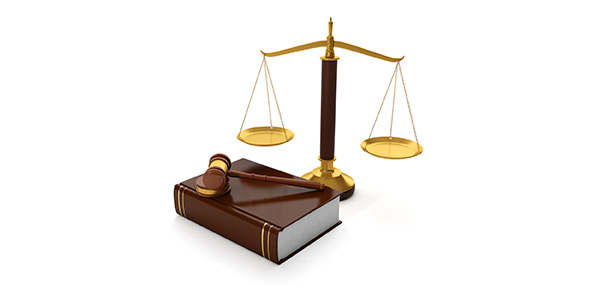Related Flashcards
Related Topics
Cards In This Set
| Front | Back |
|
R v Kearly
|
The police raided D's
flat, found a small quanitity of drugs and arrested him. The police remained in
the flat after D had been taken away and whilst there they intercepted 10
telephone calls and received seven visitors asking for D and wanting to buy
drugs.
Held, that evidence tendered by words spoken when D was not present by a person not called as a witness, for the purpose of enabling the jury to draw an inference as to D's actions and intentions, was irrelevant unless the words spoken were otherwise relevant as part of the res gestae, and was inadmissible as hearsay. Accordingly, the police officers' evidence was inadmissible. Furthermore, the fact that the Crown was able to tender evidence of a large number of calls and visitors did not make the police officers' evidence admissible, since the cumulative effect of the statements made by the callers and visitors was no more than to show a common reputation on the part of D, which was inadmissible in evidence |
|
R v Twist and Others
|
(1) The 2003 Act
contained a complete code for hearsay in those criminal proceedings to which
the strict rules of evidence applied, abolishing the common law of hearsay
except where it was expressly preserved. The default position was that hearsay
was inadmissible unless it qualified for admission under the bases for
admission in s.114(1) of the Act.
Where a party sought to prove that a matter stated in the communication was fact, the rule against hearsay would be engaged. Section 115(3) provided new definitions of "statement" and "matter stated", imposing a crucial limitation on the otherwise general expression "matter stated". It was not enough that the matter was stated; it was only governed by the hearsay rules if one of the purposes of the maker was as set out in s.115(3). The general approach to whether the hearsay rules applied should be to identify what relevant fact or matter was sought to be proved and ask whether there was a statement of that matter in the communication. If not, then no question of hearsay would arise. If there was, the question was whether it was one of the purposes of the maker of the communication that the recipient, or any other person, should believe that matter or act upon it as true. If yes, it was hearsay; if not, it was not. The answers to those questions would be case-sensitive; the same communication might be hearsay or not depending on the matter for which it was relied on and the fact it sought to prove. When addressing those questions, the difficult concept of the "implied assertion" should be avoided. It no longer mattered whether a statement was analysed as containing an implied assertion if the speaker's purpose did not include getting anyone else to accept it as true. (2) It was important to remember that deciding whether a communication was hearsay or not might not be the end of the issue of admissibility. The fact sought to be proved had to be a relevant fact, as otherwise the evidence would be inadmissible on grounds of irrelevance. |
|
R v W
|
Evidence of statements forming part of the res gestae was admissible
notwithstanding the fact that the prosecution chose not to call the witness who
had made the statements; however, where such evidence might have an adverse
effect on the fairness of proceedings it should be excluded.
The Attorney General made an application to the
court asking for its opinion on the question of whether a statement, otherwise
admissible as part of the ~res gestae~, was nevertheless to be excluded when
the witness who made the statement could be brought to court but there were
reasonable grounds for believing that he or she would not give truthful
evidence in accordance with the ~res gestae~ statement.
|
|
Kostovski v Netherlands
|
K was convicted in
Holland of robbery on the evidence, inter alia, of anonymous witnesses. The
latter were not heard at trial, but their evidence was admitted through reports
drawn up by the police and examining magistrates. At no stage could the
witnesses be questioned directly by K or by his lawyer. Held, that the
constraints affecting the rights of the defence were such that K could not be
said to have had a fair trial. Accordingly, there had been a violation of
Art.6. The accused did not have an adequate and proper opportunity to challenge
witnesses against him.
|
|
R v Sellick and Sellick
|
Where a witness, whose
identity was well known to the defendant, had been kept away through fear.
Where the court could be sure that the identified witness, who was the sole
witness and well known to the defendant, had been deterred from attending court
through fear of the defendant or persons acting for him, it could allow the
witness's statement to be read by taking certain counterbalancing measures.
These included taking care to ensure that the quality of the evidence was compelling,
drawing the jury's attention to aspects of the witness's credibility, and
giving a clear direction to the jury to exercise caution. In such cases, it was
the defendant who had denied himself the opportunity to examine the witness and
so could not complain of an infringement of Art.6(3)(d).
|
|
Luca v Italy
|
As a general rule
Art.6 required that a defendant should have an adequate and proper opportunity
to challenge and question a witness against him, either when he made his
statement or at a later stage. Where a conviction was based solely or to a
decisive extent on depositions that had been made by a person whom the accused
had had no opportunity to examine, the rights of the defence had been
restricted to an extent which was incompatible with the guarantees under Art.6.
|
|
R v Imad Al Khawaja
|
The admission of a witness statement of a complainant who had died prior
to trial was not a breach of a defendant's right to a fair trial under Art.6.
The trial was not unfair. The overall evidence
against K was very strong. As T was the sole witness of the crime against her
and had made a statement to be used in its prosecution, there was a strong
public interest in the admission of the statement so that the prosecution could
proceed. However, the public interest was not to override the requirement of a
fair trial. The right to examine witnesses in Art.6 was only one specific
feature of a fair trial. If the opportunity to examine was not provided, it had
to be determined whether the proceedings as a whole, including the way in which
evidence was taken, were fair. It was significant that T had not absented
herself but rather had died, and that K was still able to attack T's evidence
using expert evidence and to explore inconsistencies between T's statement and
the evidence of recent complaint from other witnesses.
|
|
CPS v CE
|
The case against E was
based solely on the evidence, which was a video-recorded, out-of-court
interview of V, who refused to attend court to give evidence and be
cross-examined. The judge concluded that to admit the evidence without calling
V would be a breach of E's rights under Art.6, and would be unfair having
regard to the provisions of the Criminal Justice Act 2003 s.116(4).
|
|
RL v R
|
There were no grounds for finding that convictions of rape and indecent
assault were unsafe where a statement given by the appellant's wife,
implicating her husband, was admitted under the Criminal Justice Act 2003 s.114
after the trial judge had ruled that the wife was not a compellable witness
against her husband under PACE s.80.
|
|
Al Khawaja and Tahery v United Kingdom
|
It was necessary to
proceed on the basis that the two witness statements which were the subject of
contention were decisive in each case. More specifically, had the witness
statements not been admitted, then there would have been no convictions. K and
T had not been provided with the opportunity to challenge the evidence against
them. Moreover, the more specific counterbalancing factors that applied to the
individual cases did not overcome the absence of an opportunity to
cross-examine. In K's case, one such consideration was that there were no major
inconsistencies between the patient's account and other evidence given against
him. However, that did not alter the fact that, had the patient's evidence not
been admitted, the case against K would not have been sustainable. In T's case,
the factors that the trial judge had given warnings against the evidence and
that T himself had had the opportunity to give evidence did not overcome the
prejudice accruing to him. It followed that both K and T had established that
violations of art.6 had occurred.
|
|
R v Horncastle
|
Provided the provisions of the Criminal Justice Act 2003 were observed,
so that hearsay evidence was demonstrably reliable or its reliability could
properly be tested and assessed, there was no breach of the art.6, if a
conviction was based solely or to a decisive degree on hearsay evidence
admitted under the Act.
(1) The admissibility of evidence was a matter for the national court. The primary role of the ECHR was to determine whether, overall, a trial was fair. It was necessary to distinguish between cases of anonymous witnesses and identified but absent witnesses. The Act was concerned with identified but absent witnesses: it did permit the admission of the evidence of anonymous witnesses, to whom different considerations applied. Where the evidence before the court was that of an identified but absent witness, there was no reason for a further absolute rule that no counterbalancing measures could be sufficient where the statement of the absent witness was the sole or decisive evidence against the defendant. That would include cases where the hearsay evidence was demonstrably reliable, or its reliability was capable of proper testing and assessment, thus protecting the rights of the defence and providing sufficient counterbalancing measures. There were a number of considerations leading to the conclusion that there neither was nor should be a rule that counterbalancing measures could never be sufficient where the evidence was sole or decisive: (i) such a requirement was rejected by the Law Commission and by Parliament in framing the Act; (ii) the code set out in the Act provided rigorous conditions for admissibility; (iii) explicit provisions were made which enabled the defence to test the credibility and reliability of the evidence by s.124 of the Act; (iv) such a rule had principled and practical objections: the essential considerations were whether there was a justifiable reason for absence and whether the evidence could be assessed and tested so that it was safe to rely upon it , a consideration which the ECHR had not fully considered; (v) s.125 of the Act provided an overriding safeguard which went to the essence of the evidence so admitted: its reliability; (vi) the difficulties facing a defendant when an application was made to admit hearsay evidence were well understood by the courts of England and Wales and the statutory conditions in the Act were rigorously applied; (vii) the decision of the ECHR in Al-Khawaja did not justify the court from departing from its prior decisions as to the admission of hearsay evidence, Al-Khawaja considered. |







